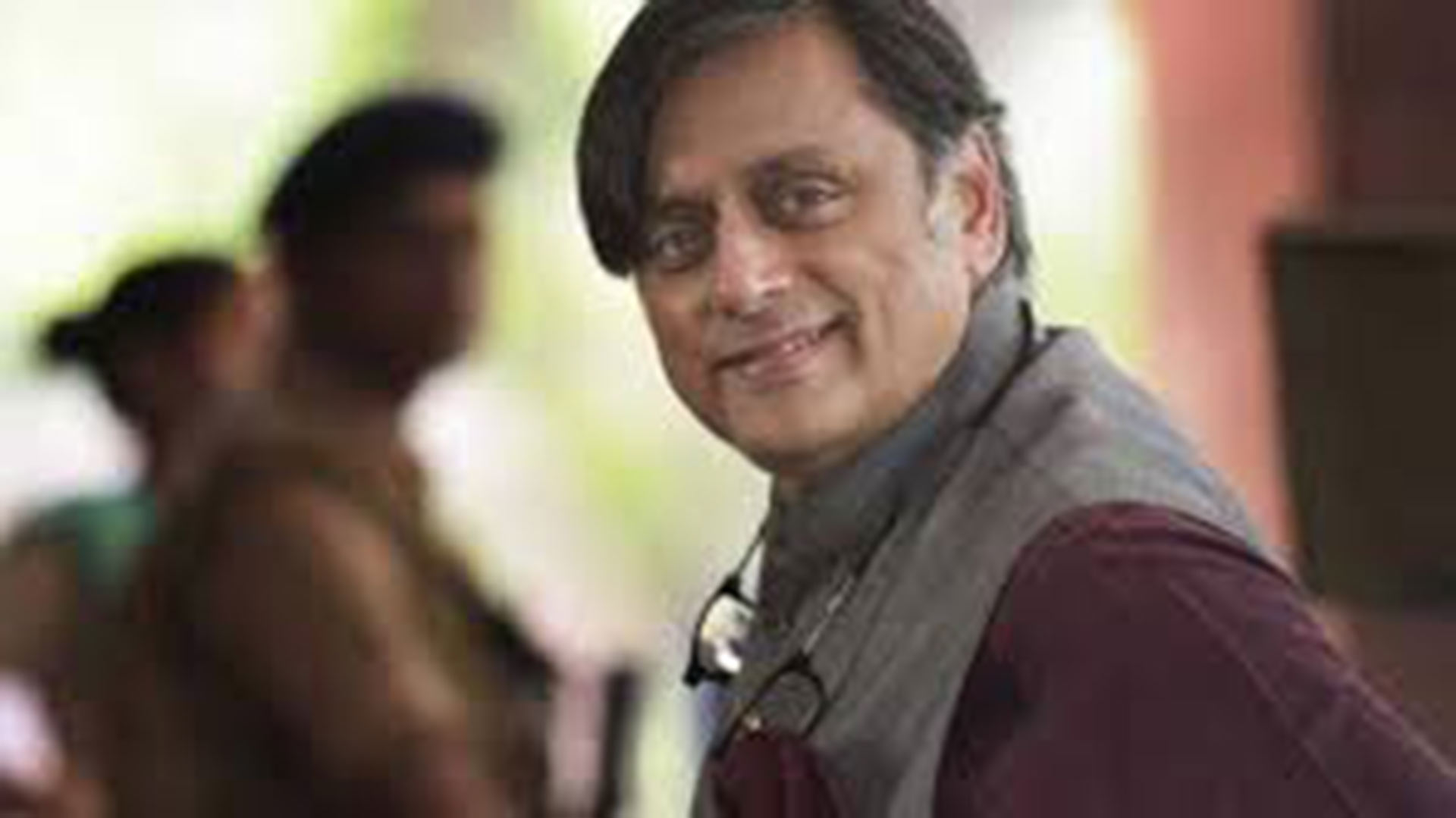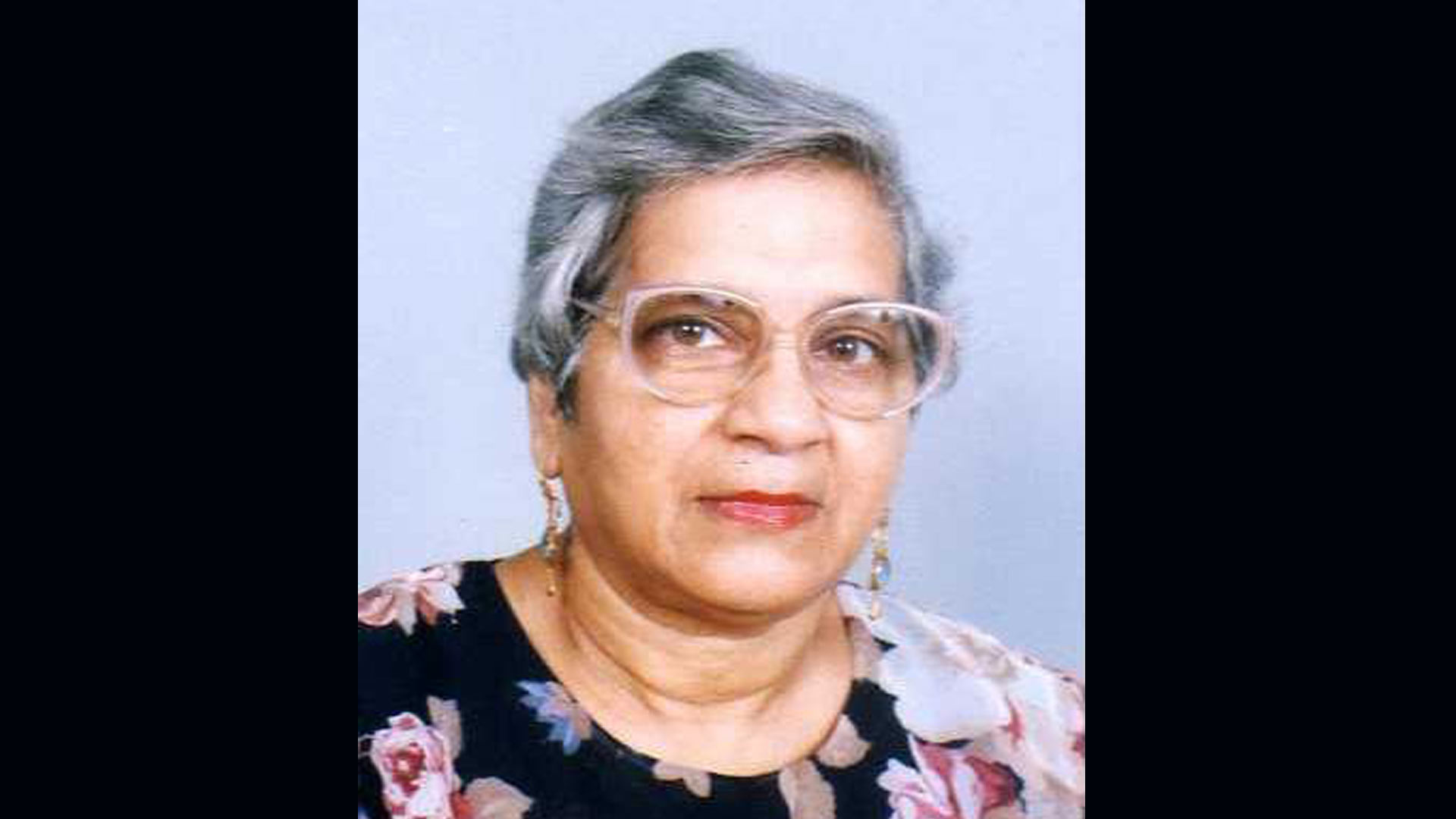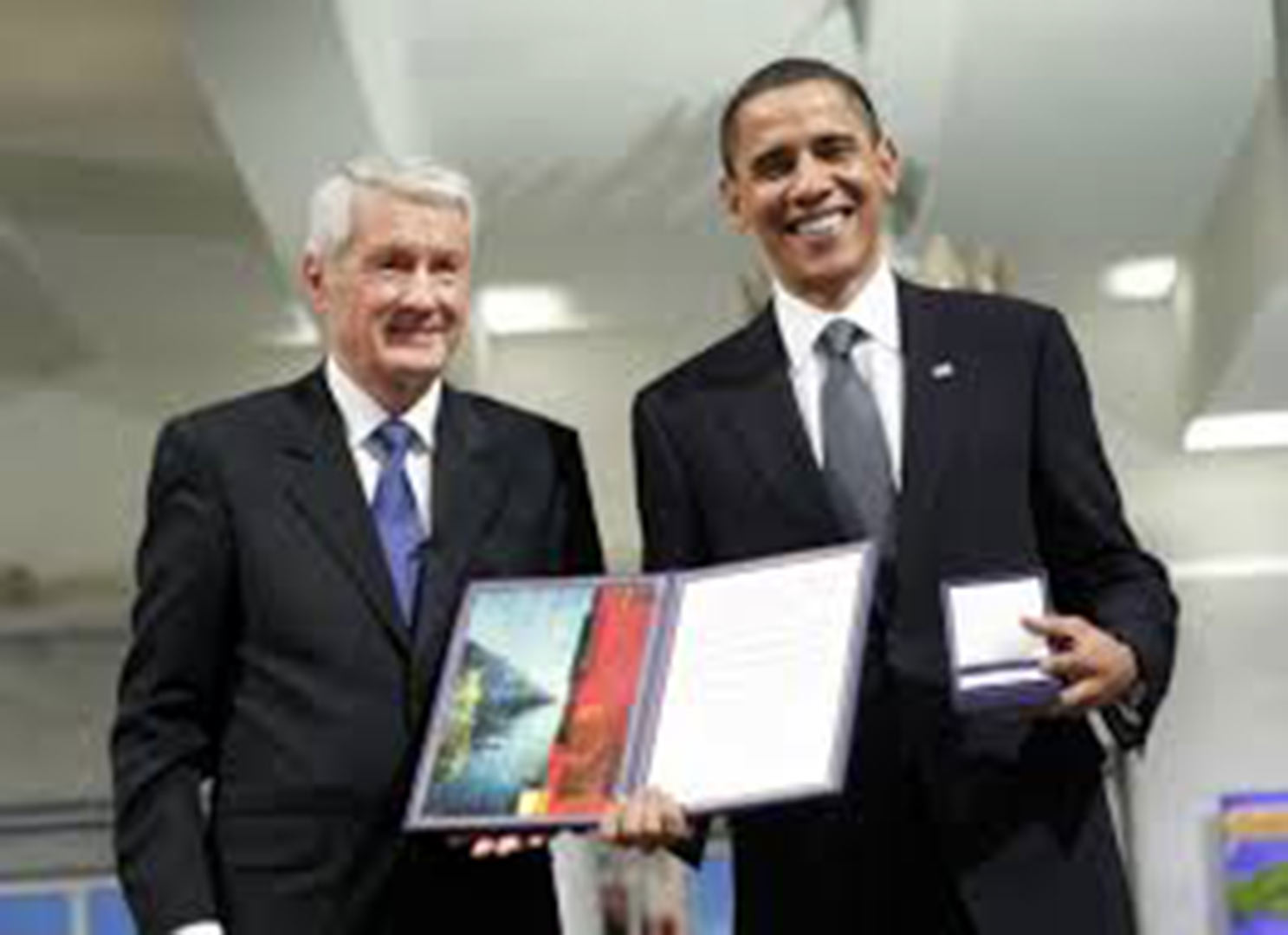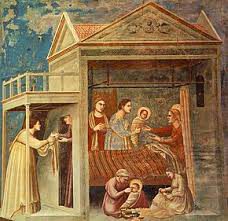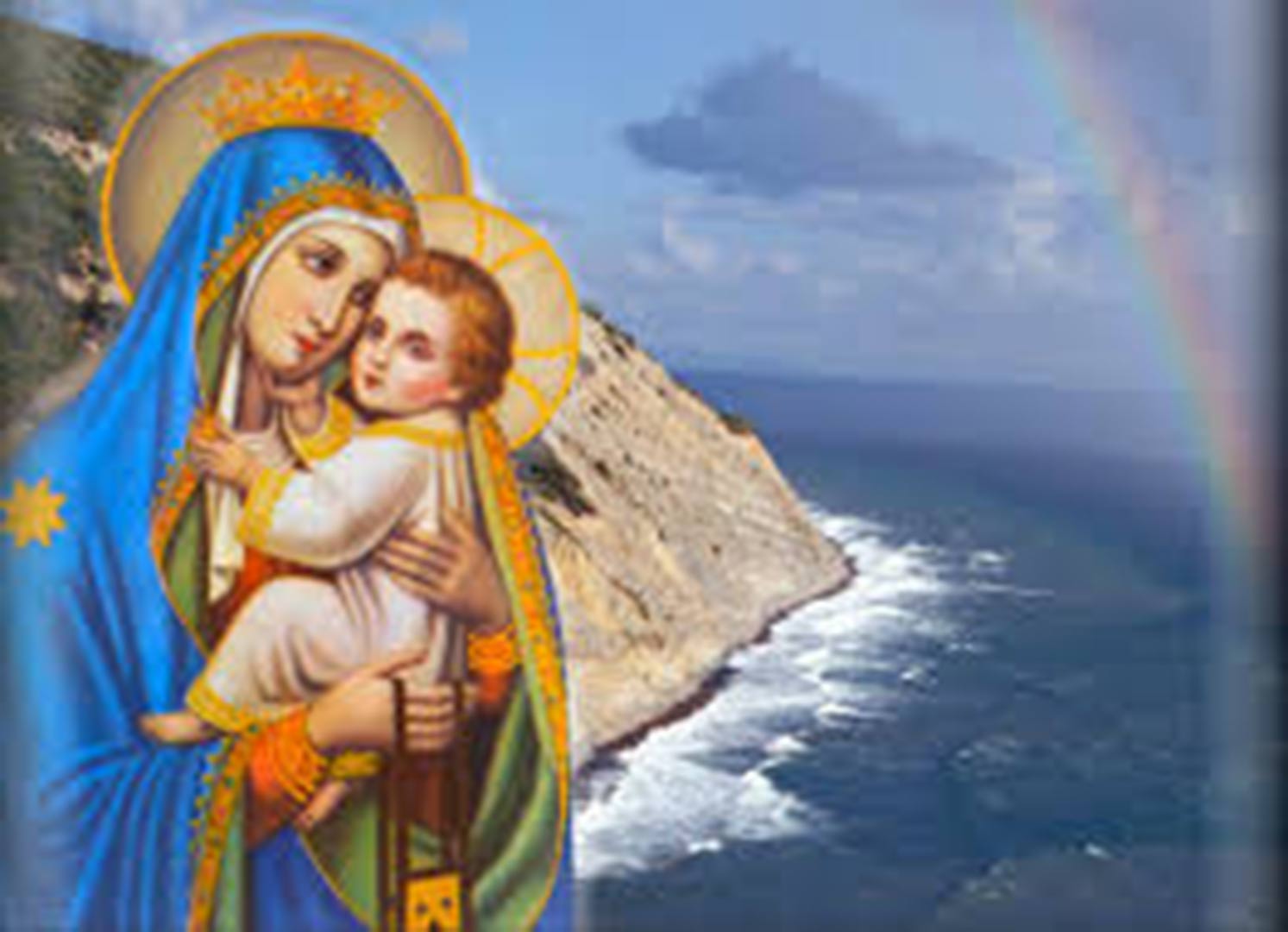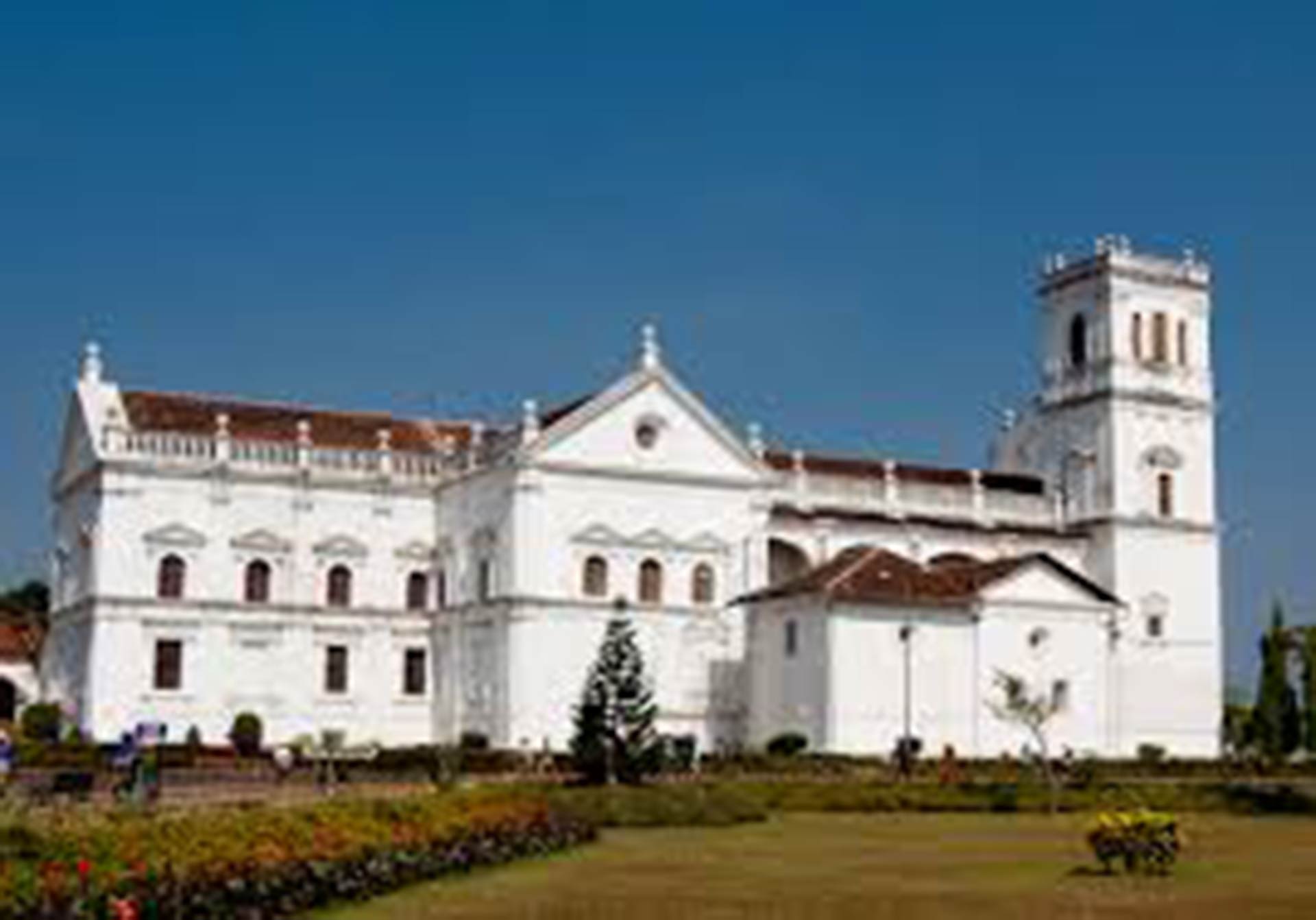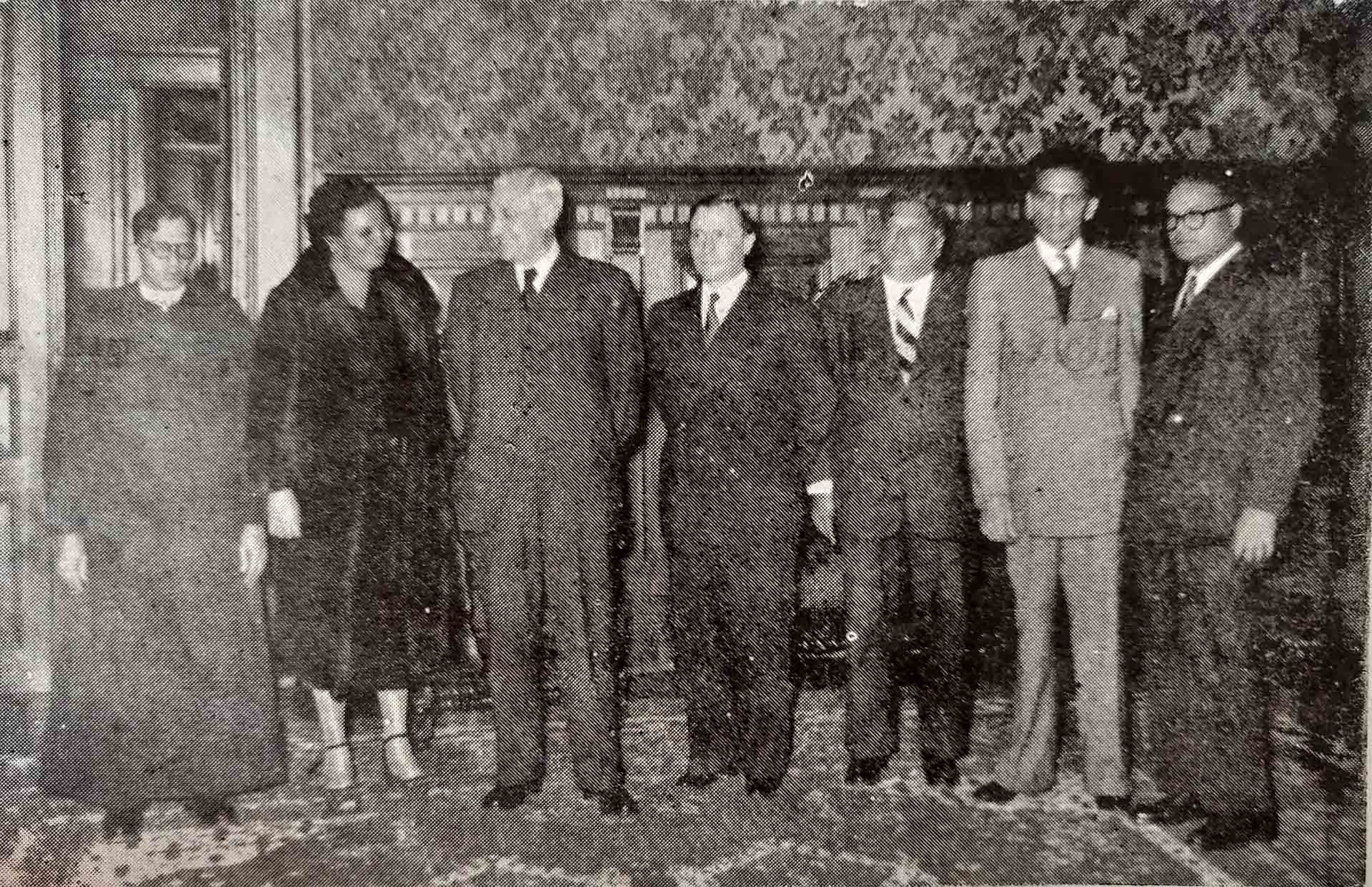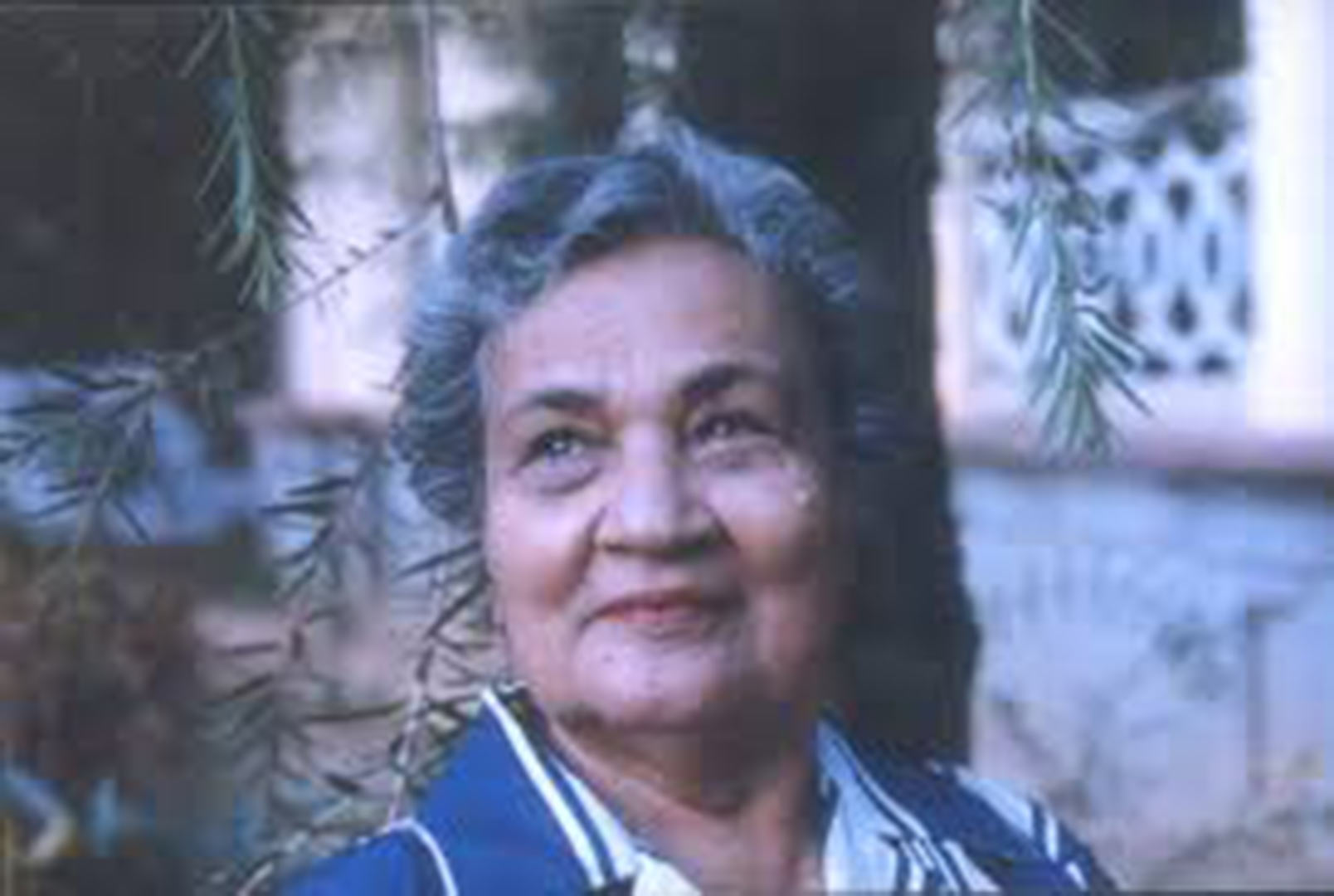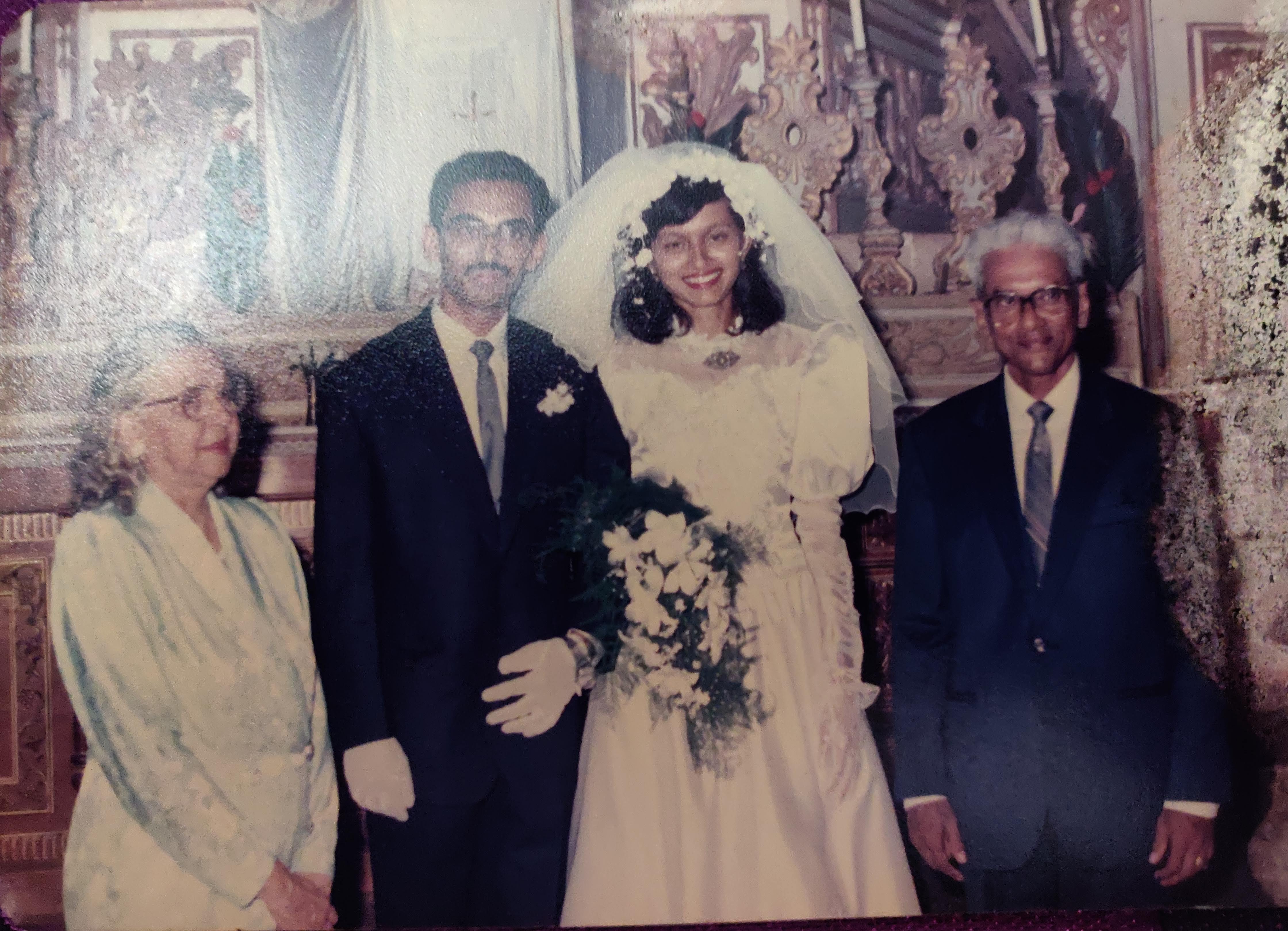Twittharoor
The word is poised to enter the Indish vocabulary, to mean ‘one who tweets, incorrigibly, almost with impunity’, in the manner of the flamboyant Shashi Tharoor. ‘Twittharoor’ scores over the already existing ‘twitterer’ in that it is evocative, pregnant with meaning, replete with history.
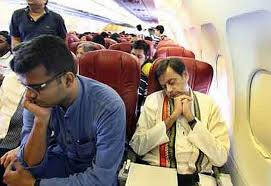

Tharoor’s tweet career shot into prominence rather controversially when ‘cattle class’ is how he dubbed Indian Airlines’ economy class. He made it clear that he had condescended to travel by it in ‘solidarity with all our holy cows’; but to which ‘holy cows’ he was referring always remained unclear. Did he mean to graze the Congress, which was once a ‘cow’? One could say it still is, considering how well its party persons are milking it: so was Tharoor having a dig at them? Or maybe he was thinking of that ubiquitous bunch of vagrants in our streets – and, by extension, those among us who similarly hang out endlessly in open spaces or travel daily by public buses….
If Tharoor only meant to send out a witty tweet, he must have amused his fans in the growing aspirational class across the nation, ever on the lookout for the antitheses of Lalus and Mayawatis. But what was humour for his friends indeed provoked furore among his foes. Furore came particularly when the minister targeted two ‘holy cows’ from our pantheon: Gandhi and Nehru. Didn’t he say people should be working on Gandhi Jayanti rather than staying at home? Far from hurting die-hard Gandhians it severely wounded commuting ‘cows’, infinitely worried about losing a comfy holiday!
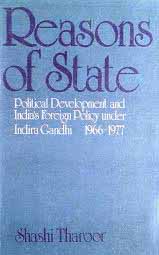 Close on its heels came criticism of Nehruvian foreign policy: here the feisty minister touched upon India’s use of force in Goa, as did one of India’s latter-day unholy cows, gutsy Arundhati Roy, who in sympathy with the Maoists blasted the country’s quickness in annexing lands and putting down popular movements. As the author of a scholarly study on Indian foreign policy, titled Reasons of State, Tharoor probably had many a reason for he stated; but then, cowed down by political bulls, he soon retracted his position. Whether the larger point went rather unnoticed or was deliberately underplayed is not for us to debate now (that can appropriately wait until December 2011); the fact is that argument did not catapult to the headlines as did his critical tweet lines on the newly-tightened visa norms: our minister had been left wondering whether they would actually ‘protect’ security or just make India a ‘less welcoming’ destination.
Close on its heels came criticism of Nehruvian foreign policy: here the feisty minister touched upon India’s use of force in Goa, as did one of India’s latter-day unholy cows, gutsy Arundhati Roy, who in sympathy with the Maoists blasted the country’s quickness in annexing lands and putting down popular movements. As the author of a scholarly study on Indian foreign policy, titled Reasons of State, Tharoor probably had many a reason for he stated; but then, cowed down by political bulls, he soon retracted his position. Whether the larger point went rather unnoticed or was deliberately underplayed is not for us to debate now (that can appropriately wait until December 2011); the fact is that argument did not catapult to the headlines as did his critical tweet lines on the newly-tightened visa norms: our minister had been left wondering whether they would actually ‘protect’ security or just make India a ‘less welcoming’ destination.

Here Tharoor came out as a champion of foreigners – mind you, not simply an ‘interlocutor’ but truly their ‘mediator’! Some months ago he had effectively split hairs but this time around, by his relaxed approach, external affairs flowed seamlessly into his personal affairs – and alas, Pushkar, his femme fatale, true to her name, pushed herself, so hard that ‘external’ and ‘personal’ turned ‘fatal’.

There was a time in the 1980s when I used to lap up the then international civil servant Tharoor’s monthly dispatches for our very own Gentleman magazine. Now it is the Opposition that laps up the fodder for controversy that he provides through his freewheeling tweets. But aside the fact that Tharoor’s spat with a sports honcho actually opened a can of worms, it is my hunch that he had no prior inkling of any sinister plot in the gentleman’s game. The IPL was only a side-show for the wordsmith Tharoor; all that he wanted was to quickly hit on a plot for a promising thriller.
The cricket competition controversy had all the makings of an irresistible reality show; the suave minister crafted the plot by personally creating the moment. Its prospective morphing into a creative work will be a classic case of art imitating life. In it its creator will have the last laugh: besides showcasing his flair for affairs of every hue, he will prove that his tweet, even if indiscreet, is creative. He who quit his UN job will show that he is no quitter; he who frittered away his MEA position will always on twitter stay. He who once lost his bid for UNO’s top post may one day become the secretary-general of an UTO, short for ‘United Twitters Organization’.
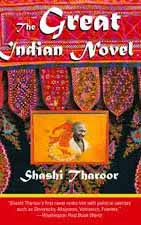
The only story that will remain to be told is of how this diplomat-turned-politician could be so un-diplomatic and politically incorrect. But then, in the tradition of The Great Indian Novel, that ironic adaptation of the Mahabharata that Tharoor penned from a 20th century viewpoint, he can well be expected to do so himself, pioneering a literary genre that may well be called the maha-chotta Bharatiya ‘Twitter Novel’! That will be the crowning glory for India’s foremost twittharoor.
(Herald, 17 May 2010)
Dona Teresinha, as I knew her
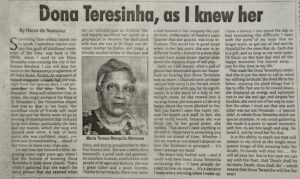
Something from within impels me to speak. I somehow cannot contain this gush of childhood memories of the time, way back in the 1970s, when I used to see Dona Teresinha criss-crossing the city in her Datsun Bluebird. I can still hear her voice in the Renascença programme of All India Radio, Panjim. An exponent of Indo-Portuguese culture that she was, right from her Lyceum days, I can picture her in the play ‘Barco Sem Pescador’. Many will remember that, at times, she singly animated the Mass at St Sebastian’s, the Fontaínhas chapel that was so dear to her heart. Her steadfast circle of friends will recall that she and her family never let go an evening of entertainment that included song and dance, particularly the fado and the mandó, which she sang and danced with verve. A lady of many parts, she was confident, smart, creative and forward-looking… ahead of her times in more ways than one.
Let me now fast forward a little, beginning some eight years ago, when I had the fortune of knowing Dona Teresinha a little more closely. That’s when I gathered that she wasn’t the stern person that she seemed when her car whizzed past us children. She had happily sacrificed her career as a pharmacist to become the dedicated wife that she was to Dr Hugo and devoted mother to Carlos and Jorge, a friendly mother-in-law to Marlene and Silvia, and doting grandmother to their four bouncy kids. She was a meticulous housewife, a good cook and gourmet. An excellent hostess, comfortable with people of all ages and stations, she was a great talker and a good listener. Thanks to her vivacity, there was never a dull moment in her company. Her joie de vivre, emblematic of Panjim’s Latin Quarter that she graced, was truly infectious: This stood her in good stead when, in her last years, she was in indifferent health – indeed in a state that would have some lesser mortal slide down the slippery slope of self-pity.
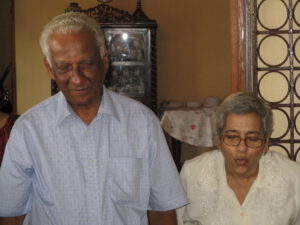
Early on 15th instant, after a pall of gloom had descended upon our household on hearing that Dona Teresinha was no more, I chanced upon an inspirational little story in the Herald, which I wish to share with you for its significance. It is the story of a lady in her twilight years. As she moved into a nursing home, she was seen to be very happy about the room allotted to her. ‘But you haven’t seen the room yet,’ said the health care staff. In fact, she never really would, because she was blind; yet, in her good poise, she replied, ‘That doesn’t have anything to do with it. Happiness is something you decide on ahead of time. Whether I like my room or not doesn’t depend on how the furniture is arranged… it’s how I arrange my mind.’
The brave lady further said – and it could well have been Dona Teresinha exclaiming this – ‘I have already decided to love my room… it’s a decision I make every morning when I wake up. I have a choice: I can spend the day in bed recounting the difficulty I have with the parts of my body that no longer work, or get out of bed and be thankful for the ones that do. Each day is a gift, and as long as my eyes open, I’ll focus on the new day and all the happy moments I’ve stored away… just for this time in my life.’
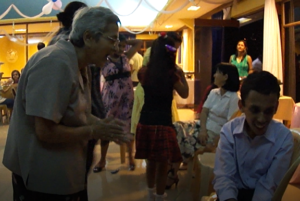
That reads like Dona Teresinha’s credo! And this is just the time to call to mind her edifying fortitude! She lived life to the fullest, enjoying the good things that it has to offer. Not one to be cowed down, she displayed an energy and optimism rare in our day and age; and despite her troubles, she went out of her way to comfort the other. I must say that one such other was our son Fernando – a ‘special child’, to whom Dona Teresinha doled out special attention. At any social gathering she made it a point to spend moments with him, to see him laugh and sing. He loved it, and he loved her for that.
It is this ability to reach out that will remain in my mind as the single most potent image of this amazing lady. No doubt, Fernando will miss her…. We will all miss her. But in her case we can say with the Poet, that ‘Death shall be no more. Death, thou shalt die’ – which means that Dona Teresinha will live forever!
(Herald, 25 April 2010)
Christmas as a state of being
Have you noticed that the singing or playing of carols before Advent hardly strikes a chord in our hearts? It’s almost like getting into a sweater on a hot summer’s day!
Hearing people say ‘It doesn’t feel like Christmas just yet’ makes one wonder what really gets in the way of enjoying a Christmassy feeling through the year. Yes, maybe we need a few props – the bright star, the colourful decorations, the rustic crib, the delicious home-made sweets, the joyful carols and the festive clothes… even the nippy weather – to get into the mood. But should our feeling, thinking, or being be governed by externals alone?
It’s time we realized that several agencies out there are vying for our time and attention: the merchants, who dangle their goodies before our eyes – pushing us into a ‘commercial’ Christmas; and now the environmentalists, too, wrangling about all that – pressing us into an ‘ecological’ Christmas. Besides, there are the age-old secularists, or say, those without any religious principles, for whom all is grist that comes to their mill…. They are all sources of great distraction for the young and old, the rich and the poor, the educated and the uneducated alike.
For our part, why not respond intently to our basic calling, which is to herald a ‘spiritual’ Christmas? By this we mean giving priority to the life of the spirit, rather than to material concerns; seeking to reconcile with God and to reach out to our neighbour; and giving to Christ the place that rightly belongs to Him in our hearts and minds. At Christmas we are called to truly light up the virtues of faith, hope and charity; it’s a special time to don God’s (and not Santa’s) thinking cap. And then, as we stop to contemplate the face of the Little Babe, Our Lord and Saviour, the worldly delights of a winter wonderland will vanish and overriding concerns about our Planet pale into insignificance.
If we have had fake Christmases in the past, let us put them behind us and move on; let us turn a new leaf, setting sights on a genuine Christmas and a radiant New Year. The tender spirit of December will not evaporate – and thus our world will be a better place – if Christmas isn’t limited to a day; if all mothers become like Mary and fathers like Joseph, and if we all model ourselves on Jesus of Nazareth….
And that’s probably when the singing or playing of carols will begin to strike a chord in our hearts right through the year!
(Editorial, The Stella Maris Bulletin, Vol. 3, No. 2, Dec 2009)
Obama's Nobelity
‘Fighting for peace’ is a contradiction in terms. This can be resolved by ‘advocating’ or ‘standing up for’ peace. But, mind you, this is no semantic war; the use of words betrays a mindset. ‘Fighting for’ would suggest that peace doesn’t come to us naturally, that it eludes us, that we are peace mongers at best, using the ‘Atoms for Peace’ argument selectively, thus exposing human nature as a wolf in sheep’s clothing!
But this time around it is not so much about ‘fighting for’ peace; the big fight is about the Peace award. The irony: The Peace Prize as an instrument of disquiet! However, not so strange if we consider that Alfred Nobel instituted it to atone for inventing dynamite! But, curiously, today the world stands dynamited into bits and bytes of opinion, with a 1.4 million dollar question in its trail: Is Barack Obama being awarded for what he has done, is doing, or is going to do?
Has the Prize, citing Obama’s extraordinary efforts toward a nuclear arms-free world, international diplomacy, and cooperation between peoples, come ahead of time? Former Peace Laureate Lech Walesa blurted: “So soon? He has not yet made a real input. He is proposing… but he still has to do it all.” And Henry Ford would have said, “You can’t build a reputation on what you are going to do.”
But the point is that Obama has already built quite a reputation for himself. Through his model election campaign, in which ‘change’ was the buzzword, the man battled several odds on his ‘black’ road to the White House. And now nine months into the Presidency, he has created a new climate in international politics and, equally important, a new politics of climate change. Thanks to his world view, dialogue and negotiation have become choice instruments to resolve complex conflicts. His charisma has galvanized the world. To quote Angela Merkel, “Obama has in a short time managed to establish a new tone and a willingness to talk worldwide.”
Granting that the US President has still not been able to fully concretize the envisaged change, could we be as charitable as to recognize that concrete has a certain curing period? If we look at time future as a simple extension of time present, we shall no longer doubt that change is just round the corner. Obama has been an inspirational figure in the face of problems at home and abroad; he has made an impact on the world psyche, giving the people hope for a better future. Of course, he has now to live it out especially in the infernos of Iraq, Israel, Palestine and Afghanistan. His sagacity, intelligence, nobility of purpose and track record of sincerity and hard work will see him through it all. Yes, he can do it!
Some sections of the press have lampooned the choice of Obama for the Nobel Peace Prize; and the Taliban has even suggested that he should have instead won a ‘Nobel Prize for Escalating Violence and Killing Civilians’ (Wonder why they don’t institute a ‘Taliban Prize for Terrorism’!). On the other hand, many have realized that the Prize has come with a price: the pressure to perform, to show the results of his rhetoric, and to live up to the people’s expectations. In this sense, a Nobel Laureate is a modern-day nobleman: if Noblesse Oblige was the creed of the Nobility, responsible action should be the credo of the Nobelity.
Aside his noble intentions, did Obama have Nobel intentions? Members of the former slave race are ecstatic about being catapulted into the New Nobility, but the US President confessed, “To be honest, I do not feel I deserve to be in the company of so many of the transformative figures who’ve been honoured by this Prize.” For sure, he was thinking of Mother Teresa and Nelson Mandela; of Willy Brandt, who got the Nobel for his Ostpolitik; and Mikhail Gorbachev, who early in his own presidency received the accolade for perestroika and glasnost. But uppermost in his mind must have been his political guru Mahatma Gandhi, who was not honoured by the Nobel and so could do it no honour!
It did surprise many that, rather uncommonly, the Prize should have come in between the promise and the performance. Himself “surprised and humbled” by it, Obama put Nobelity in perspective, saying, “I do not view it as recognition of my own accomplishment…. Throughout history the Nobel Peace Prize has not just been used to honour specific achievements; it’s also been used as a means to give momentum to a set of causes. And that is why I will accept this award as a call to action, a call for all nations to confront the common challenges of the 21st century.”
By his rise onto the world stage, Barack Obama set new benchmarks not only for the international community and unwittingly for the Nobel as well!
(This version was published in Renovação, Vol. XXXVIII, No. 22, 16-30 Nov 2009, under the title 'Novel Nobel'; the same middle, titled 'Obama's Nobelity', with minor differences, was earlier published in Herald, 14 Nov 2009)
Mary, our Star and Haven
Christ is at the centre of our Faith; His glorious Resurrection is its bedrock. But none of this would be possible if not for Mary! It was through her that our Father in Heaven sent us His Only Son; it was through her that He worked out the history of our salvation. On her part, by willingly cooperating in God’s plan for estranged humankind, Mary was privileged to receive, in the words of Pope John Paul II, the “deepest knowledge of the mystery of God’s mercy.”
Mary is thus less off-centre than some of us may imagine. If Christ is the Sun, she is the Moon; she is a reflection of His radiance, in whose light we journey or sail through time. She is a sure guide for our steps. She prays for us sinners, now and at the hour of our death. She leads us to the Father and the Son in Heaven. For all this she is naturally deserving of our love and attention.
When we sing and pray “Be with us, Mary, along the way…” we can trust Our Lady, Queen of Heaven and Earth, to be to us that guiding star and safe haven all at once!
The Church proclaims – and we can see – Mary’s living and active presence in our day-to-day existence. She touches our lives; she who had a personal experience of the ups and downs in our valley of tears watches over us, like a true mother keen about her children’s welfare. She is our mother of mercy, our sweetness and our hope. She is our mother most faithful, who never leaves us unaided when we fly to her patronage or implore her help. She is our mother, holy, tender and kind, a shining model of faith, hope and charity.
Catholic Tradition invokes our Blessed Mother in myriad ways. Devotion to her is “intrinsic to Christian worship”, says Pope Paul VI; and it is expressed through liturgical feasts dedicated to her, and through Marian prayer, such as the Rosary. To our local faith community she is the Star of the Sea – not only because we are in physical proximity of deep and unknown waters, and our people are a sea-faring lot; but also because, on a universal plane, the sea is a symbol of life’s many perils through which we all need to be piloted to a safe haven.
When we sing and pray “Be with us, Mary, along the way…” we can trust Our Lady, Queen of Heaven and Earth, to be to us that guiding star and safe haven all at once!
(Editorial, The Stella Maris Bulletin, Miramar, Vol. 3, No. 1, October 2009)
Mary, our Star and Haven
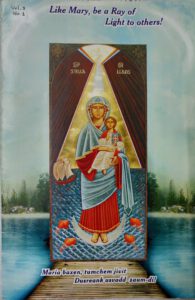
Christ is at the centre of our Faith; His glorious Resurrection is its bedrock. But none of this would be possible if not for Mary! It was through her that our Father in Heaven sent us His Only Son; it was through her that He worked out the history of our salvation. On her part, by willingly cooperating in God’s plan for estranged humankind, Mary was privileged to receive, in the words of Pope John Paul II, the “deepest knowledge of the mystery of God’s mercy.”
Mary is thus less ‘off-centre’ than some of us may imagine. If Christ is the Sun, she is the Moon; she is a reflection of His radiance, in whose light we journey or sail through time. She is a sure guide for our steps. She prays for us sinners, now and at the hour of our death. She leads us to the Father and the Son in Heaven. For this she is naturally deserving of all our love and attention.
The Church proclaims – and we can see – Mary’s living and active presence in our day-to-day existence. She touches our lives; she who had a personal experience of the ups and downs in our valley of tears watches over us, like a true mother keen about her children’s welfare. She is our mother of mercy, our sweetness and our hope. She is our mother most faithful, who never leaves us unaided when we fly to her patronage or implore her help. She is our mother, holy, tender and kind, a shining model of faith, hope and charity.
Catholic Tradition invokes our Blessed Mother in myriad ways. Devotion to her is “intrinsic to Christian worship”, says Pope Paul VI; and it is expressed through liturgical feasts dedicated to her and through Marian prayer, such as the Rosary. To our local faith community she is the Star of the Sea – not only because we are in physical proximity of deep and unknown waters, and our people are a seafaring lot; but also because, on a universal plane, the sea is a symbol of life’s many perils through which we all need to be piloted to a safe haven.
When we sing and pray, “Be with us, Mary, along the way…” we can trust Our Lady, Queen of Heaven and Earth, to be to us that guiding star and safe haven all at once!
(Editorial, The Stella Maris Bulletin, Vol. 3, No. 1, Dec 2009)
State Control of Church Property: Unwarranted, Perilous and Counter-Productive
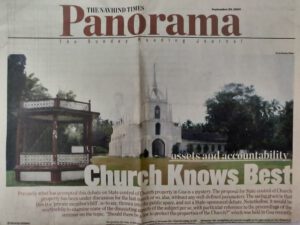
The proposal for State control of Church property has been under discussion, for the last month or so, alas, without any well-defined parameters. The saving grace is that this is a ‘private member’s bill’, so to say, thrown into the public space, and not a State-sponsored debate. Nonetheless, it would be worthwhile to examine some of the disquieting aspects of the subject per se, with particular reference to the proceedings of the seminar on the topic “Should there be a law to protect the properties of the Church?” which was held at the Goa International Centre on 28th July 2009.
Why now? – Precisely what has prompted this debate on State control of Church property in Goa is a mystery. At the said seminar, broad remarks and vague allegations were made about the functioning of the Church; there were some sweeping generalizations, too, mainly because the speakers failed to distinguish between the situation of the Church in Goa and the rest of India. As a result, none of them were able to convincingly state what is wrong with the status quo. If at all the present law regulating relations between the Church in Goa and the State is violative of the law of the land, as it was made out to be, how has the law been in operation for almost five decades? The fact of the matter is that the impugned law is not violative, because Ordinance No. 2 of 1962, promulgated by the President of India, provided for the continuance of that law and many others.
The theme of the seminar was artfully worded. It gave one the impression that the Church had solicited help and so the State was going to privilege her with a law protecting her properties from whosoever. While this was only too good to be true, it was also unnecessary, because the Church today is not seeking privileges any more than she rightfully has; what she eagerly desires, however, is conditions conducive to working peacefully within a secular framework.
Is ‘Secularism’ pliable? – Secularism would ideally mean total separation of Religion and the State, leaving no room for the latter’s intervention in the affairs of religious bodies. In a free society the State has to refrain from interfering with matters of a religious nature; its duty is to ensure that individuals can freely profess, practise and propagate their religion. In India, these rights can theoretically be abridged on grounds of public order, morality or health; the State can even make a law regulating or restricting any economic, financial, political or other secular activity associated with religious practice. But all this has to stand the test of “reasonable restrictions”, and it is incumbent upon the State to prove the need for change, lest the idea of secularism should turn pliable to the State’s whims and fancies.
Perils of State Intervention – One may tend to believe that State intervention is ‘safe’, considering that the rights of the minorities and the freedom of religion stand guaranteed by the Indian Constitution. One may not even feel threatened by some initial State involvement strictly limited to the secular part of a religious matter (say, the scale of expenses to be incurred by a religious institution in connection with rites and observances). In practice, however, such intervention can be an irritant or worse, an intrusion in the religious affairs of a body. Hence it must be ensured that the State intervenes only in extremis.
At any rate, is the Church in Goa a fit case for State intervention? And whatever the modalities of control sought to be exercised on the Church in Goa, citizens would, in the first place, doubt the State’s credentials for such a task! This is not to question the sovereignty of the State but only to emphasize that the State has almost always been a poor manager. For instance, by its intervention, a centuries-old, home-grown and much loved institution like the Ganvkari or Comunidades is in a shambles today. Such is the track record of the State that one can foresee that its control on Church property could result in gross mismanagement, appropriation of funds, encroachments, sale and alienation of lands, and the dismantling of the Church infrastructure, leading to a gradual demolition of the religion.
Political and administrative interference from the State is something that Boards and Trusts of some religious communities outside Goa have often complained about. Some faith communities were compelled by the civil law to have State-managed bodies appointed to run their affairs, because of certain circumstances related to the pre- and post-Independence history of their respective faiths. For them, State intervention became a necessary evil, whereas in Goa history took a different course. Therefore the argument that all religions, everywhere in India, must be on the same footing – or, in other words, suffer from the same malaise – is simply not tenable!
State within a State? – It was pointed out with gusto at the seminar that there cannot be a State within a State. Fair enough. But why cast a slur on the Church in Goa? Has the Church thrown a challenge or posed a threat to the secular State?
The ‘State within the State’ syndrome is perhaps true of some of our business houses. How else does one explain the lingering case of the decrepit River Princess? The concerned business house rules the waves, suggesting that they never will be slaves (with due apologies to ‘Rule Britannia!’). Indeed, they are a State within the State!
Or is it simply the magnitude of the Church’s holdings that makes her look like a State within a State? If yes, let this yardstick apply to our mineral ore exporters; they have to be held accountable for creating environmental problems – and what is more – while making profits on what is essentially State property! Will there ever be the political will to intervene in the internal affairs of these erring business houses?
In contrast, Church assets, mainly comprising donations and gifts from members of the community, have several onuses to be fulfilled. They are held by specific Trusts and their proceeds employed for charitable purposes, particularly education and health among the poorest sections and across faith communities.
Finally, is it the influence that the Church wields in public life that makes her look like a State within a State? Then the same objection should logically extend to the whole of the Fourth Estate!
And at this rate, we shall soon cease to be a democratic State!
Has the Church been above the law? – The world over, the internal affairs of the Catholic Church are governed by the Canon Law. Thanks to her international juridical personality, the said law is admissible in the court of law, since it is not at variance with the civil law. Hence the question “Can you allow any religious head to exercise his power without any regulation?” is malicious, and offensive to the head of the Church in Goa. While observing that “any activity ungoverned by law is lawlessness and would lead to arbitrariness” the speaker failed to recognize that India suffers miserably from lawlessness and arbitrariness despite a proliferation of civil and criminal laws (or sometimes because of it)!
So was it right to peremptorily accuse the Church of ‘lawlessness’? As an institution she enjoys a centuries-old tradition of respecting the canon, civil and criminal laws, and this has naturally made her members law-abiding citizens of the country and the world.
Unique Goan Situation – A look at the situation in Goa as a former Portuguese colony should provide answers to many a nagging question. It is well known that in 1961, in support of the many solemn promises that had been made earlier with regard to preserving Goa’s identity, many Portuguese laws were accepted by the Republic of India – for instance, the Portuguese Civil Code, now hailed by all communities in Goa as being fair and progressive and by the Union of India as a model for the country.
Now this has privileged the Hindu, Catholic and Muslim communities in Goa vis-à-vis their pan-Indian counterparts. And it is within this historical framework that their institutions have been functioning, be it the Confrarias, Fábricas and Cofres of the Catholics or the Mazanias of the Hindus. Now, should all these institutions that are unique to Goa change only because they do not conform to a pan-Indian model? If so, where is the principle of Unity in Diversity?
Therefore, the contention that the existing law in Goa regulating the relations between the Church and the State should be modified for the same reasons and to the same extent as it was modified in Portugal, as authoritatively stated at the said seminar, is unacceptable. Are we still tied to the apron strings of Portugal (the proverbial ‘colonial hang-over’) or conveniently blind to the fact that the Goan/Indian Christian situation is different from the Portuguese?
Transparency and Accountability – This is of the essence. The Catholic Church in Goa is equipped from within to ensure the same in temporal matters, the General Statutes of Confraternities and Rules and Regulations of Fábricas & Cofres being two main examples. There is an ever-increasing participation of both the clergy and the laity in all her institutions, which amounts to an internal system of checks and balances. There is a well-established hierarchy to oversee the same. Besides, the Church is subject to all the laws of the land, including the agrarian reform; her accounts are audited, like those of any other civil body, and she pays taxes to the State without any special exemptions. This time-tested organization has found acceptance the world over; so why all this nitpicking here?
Therefore, to allege (on behalf of the State) that the assets of the Church are being mishandled is a classic example of the pot calling the kettle black! Can the State legitimately claim that it utilizes public assets in a responsible manner? Isn’t mismanagement or embezzlement of funds the order of the day in the State? If stray occurrences of this nature inside the Church can justify State intervention, then the reports of chaotic happenings in the country surely call for declaration of a state of emergency!
The Church fulfils her legal duty of rendering to Caesar what is Caesar’s; she renders what is due, nothing less – so why should the State demand anything more?
First published in Renovação (Vol. XXXVIII, No. 17, 1-15 Sept 2009, pp 7-8) under the title 'State Control on Church Property: Unwarranted, Perilous and Counter-Productive'. Reprinted with permission by The Navhind Times (20 Sept 2009) as 'Church Knows Best', in 'Panorama', Sunday magazine, p. 1.
Remembering Leonor
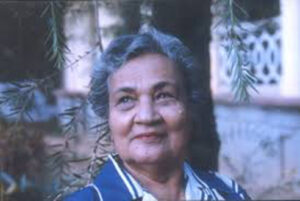
Paying homage to the dead is a cardinal civic virtue, an expression of gratitude that also helps to imbibe sterling values perhaps scarce in a new day and age. And this is what links us to Leonor de Loyola Furtado e Fernandes, who was born on 24th May 1909 to Miguel de Loyola Furtado and Maria Julieta de Loyola. Married to Martinho António Fernandes, she was essentially a matriarch and a grand lady of the Fourth Estate.
Leonor was a career woman with a difference. A mother at 16, it was after this that she began writing in earnest, without letting this disturb her duties as a housewife. Her husband encouraged her to fight for her ideals through the weekly A Índia Portuguesa, and bore the brunt as Administrator of the Comunidades of Salcete, dogged as he was by controversy fuelled by a mix of personal vengeance and political vendetta.
Although Martinho eventually emerged unscathed, it was not easy for Leonor to weather those storms while she raised four daughters. A grandmother at 39, two years later she took over the said weekly, a family heirloom and historic mouthpiece of the political party called Partido Indiano, becoming the first lady editor in the whole of the Portuguese speaking world and in the Indian sub-continent too.
In 1951, she travelled to Portugal, the sole lady in a five-member media delegation from Goa invited to see the ‘mother country’. Portugal had then renamed its colonies ‘Overseas Provinces’, considering them an integral part of a far-flung Portuguese State. Leonor wrote about what had impressed her, not forgetting the meeting with Premier Oliveira Salazar, the Minister for Overseas Territories, Sarmento Rodrigues, and the pressmen with whom she spoke on different aspects of life in Goa.

Her trip of 1956 was marked by the publication of her first book, Salteadores da Honra Alheia na Índia Portuguesa (‘Assailants of People’s Honour in Portuguese India’), whose arresting title and explosive content led to its confiscation in Goa. While she wished to publicize the truth about her husband’s professional troubles, evil doings of prominent individuals and shady workings of many a public institution got exposed too.
Leonor was a champion of civil liberties by virtue of her journalism. As a proud descendant of one of Goa’s best known families involved in the civil rights movement, she took to it like fish to water. While critical of the administrative faults of the Portuguese regime, she was a moderate in her political aspirations, open to the ideas of decentralization and greater financial autonomy for Goa, and more importantly a zealous protector of the Goan identity, in the pre- as well as post-1961 regimes.
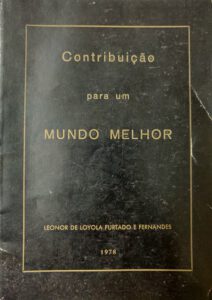
Her second book, Contribuição para um Mundo Melhor (‘Contribution for a Better World’) shows her love for Goa but does not camouflage her combative spirit. It has interesting reflections on the period spanning 1961-78; her missives from Portugal, Angola and Mozambique (August-October 1969); historical snippets about her newspaper; the story of the legendary José Inácio de Loyola Sr.; and photocopies of historic telegrams of the tumultuous days of September 1890.
Under the new political dispensation, her journal had to change its name to A Índia – just ‘India’! She was smart enough not to grudge this. But what provoked her ire was that the Comunidades had been given short shrift in a chaotic democratic state. In 1966, when interviewed by the redoubtable D. F. Karaka, Leonor fulminates against the police for searching her residence by night, looking for components of bombs and other subversive material used in the Vasco bomb case. Frustrated with their sole discovery, a book titled , her Indian passport was impounded and censorship was imposed on her paper.
The intrepid journalist declared that “her fight was against all governments who tried to deprive the people of civil rights and who imposed censorship, whether it was a Portuguese censorship or the censorship dictated by the Indian Government.” And some of her statements to the Bombay tabloid have a familiar ring even today: “The administration has gone rotten. In the (Goa) Assembly, the Opposition has accused the Government of nepotism, communalism, inefficiency and incompetence…. Laws have been passed without going into the constitutional right of the people,” she complained.

To redress her own grievances against the Government of Goa, she either met or wrote to Indira Gandhi every time. In her letter of 19th February 1966, she declared, “I believe in a Power above the powers of the world and in justice that comes, sometimes in time, at other times a bit late, in some manner or the other.” The restrictions were soon lifted, by a letter dated 13th May 1966, the significance of which day was not lost on Leonor: she was a great believer in the Message given on this day, half a century earlier, by the Mother of Jesus, when she appeared at Fatima, Portugal.
Leonor was truly blessed with a deep and empowering faith, or else she would not have endured as a career journalist until December 1975. And, not surprisingly, when the Angel knocked at her door on 8th January 2005, he must have found Leonor de Loyola Furtado e Fernandes, at the ripe old age of 95, still steadfast in her principles and faithful to her people.
(Goa Today, June 2009)
Remembering Leonor: Editor Extraordinaire
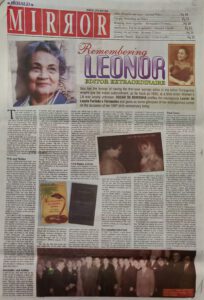
To the dead it probably matters little whether or not they are remembered: having done their bit on earth they now belong to Eternity, where worldly honour and glory are of no consequence. But paying them homage is a cardinal civic virtue – an expression of gratitude for the valuable services rendered by them to the community, which also helps to imbibe sterling values that might well be scarce in a new day and age.
That is what links us to Leonor de Loyola Furtado e Fernandes on her birth centenary. Born on 24th May 1909 to Miguel de Loyola Furtado of Chinchinim and Maria Julieta de Loyola of Orlim, she was married to Martinho António Fernandes of Colvá. She was a woman of many parts but essentially a matriarch and a grand lady of the Fourth Estate.
Wife and Mother
Leonor – Lolita, in her close circle – was a person ahead of her times. She was a career woman with a difference. When the Panjim-based eveninger Diário da Noite (2nd May 1953) asked about the beginning of her occupation, she said, ‘I don’t remember clearly when I started writing. I know I became a mother at 16 and it must have been after this that I began writing in earnest.’
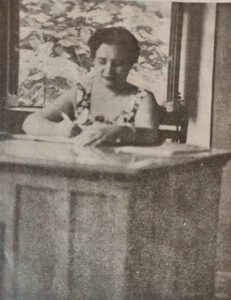 This candid statement of fact was also a reflection of her priorities. No doubt it was a man’s world but as a gifted woman she had found her way out. Talking to me (Herald Mirror, 15th September 1996), she said that her professional work never disturbed her duties as a housewife, “because my husband was an intelligent man with humanistic interests at heart. He never interfered in my work as I never did in his. There was a lot of mutual understanding. He gave me the courage to fight for my ideals – even though it might have reflected on him as a government official.”
This candid statement of fact was also a reflection of her priorities. No doubt it was a man’s world but as a gifted woman she had found her way out. Talking to me (Herald Mirror, 15th September 1996), she said that her professional work never disturbed her duties as a housewife, “because my husband was an intelligent man with humanistic interests at heart. He never interfered in my work as I never did in his. There was a lot of mutual understanding. He gave me the courage to fight for my ideals – even though it might have reflected on him as a government official.”
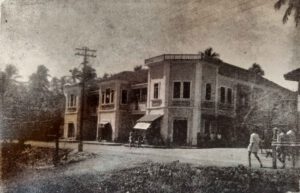
And reflect it did. As Administrator of the Comunidades of Salcete, Martinho Fernandes, a lawyer by training, was dogged by controversy, initially fomented by individuals who eyed his post, while later some of it was fuelled by a heady mix of personal vengeance and political vendetta, thanks to his wife’s plain speaking in the weekly A Índia Portuguesa. The incumbent emerged unscathed, through long and tortuous battles up to the apex court.
It must not have been easy for Leonor to weather those storms while she raised four daughters, managed the household chores and the family estates. But the years rolled by and, interestingly, at 39 years of age, she was already a grandmother! In 1950, when that venerable journal, a family heirloom and historic mouthpiece of the pro-native political party called Partido Indiano, founded by the Loyolas of Orlim, was almost folding up, it was born again with Leonor.
Journalist and Author
It was for the first time that in the whole of the Portuguese speaking world and in the Indian sub-continent as well a woman was at the head of a newspaper. This was only a natural consequence of having her father for a role model: apart from being a brilliant physician and political leader, he had edited A Índia Portuguesa from the year 1912 until his sudden demise in 1918, and his memory remained with Leonor for the rest of her days. She once said, ‘If destiny were not opposed to it, I would have studied medicine. I had a fascination for the medical profession, so as to positively spread the good to all. But I was born for something else – and I am a journalist only. I would have liked to be a physician and journalist.’ (Diário da Noite)
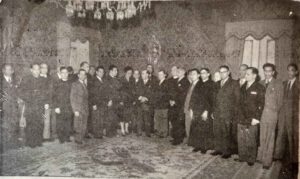
A year after assuming editorship she travelled to Portugal, the only lady in a Goan media delegation comprising Fr Manuel Francisco Lourdes Gomes, Álvaro de Santa Rita Vaz, Amadeu Prazeres da Costa and Luis de Menezes Jr. They had been invited for a month’s stay, to see for themselves what the ‘mother country’ was like. It was a public relations exercise by the Estado Novo, for in March that year the Government had passed an amendment to the controversial Colonial Act, renaming the colonies ‘Overseas Provinces’ and considering them an integral part of a far-flung Portuguese State. The change of nomenclature reinforced the one-nation theory, in a bid to counter global pressure against European colonization in the post-World War scenario.
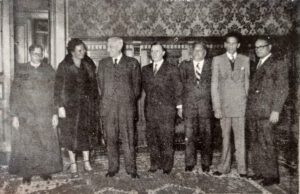
The exercise paid dividends. Members of the delegation sent regular reports to their respective newspapers. On her return, Leonor wrote about what had impressed her, not forgetting the meeting with Premier Oliveira Salazar and the Minister for Overseas Territories, Sarmento Rodrigues. She had spoken to pressmen from continental Portugal and its overseas provinces on different aspects of life in Goa.
This was the first and surely the most memorable of her many visits abroad. Her official trip of 1956, on the fortieth anniversary of Salazar’s New State, was marked by the publication of her first book, Salteadores da Honra Alheia na Índia Portuguesa, (‘Assailants of People’s Honour in Portuguese India’). The curious little book’s arresting title and explosive content prompted the Portuguese Governor-General Paulo Bénard Guedes to have it confiscated on its arrival in Goa. While the author’s primary intention was to publicize the truth about her husband’s professional troubles, these are universalized, turning the book into a “repository of truths that make up our life in India.” The picture of a coconut tree and a cobra on its cover probably point to the coexistence of indolence and poison in our land. The evil doings of some prominent individuals and the shady workings of many a public institution are exposed.

Civil Rights Activist
Leonor was a champion of civil liberties by virtue of her journalism. As a proud descendant of one of Goa’s best known families involved in the civil rights movement, she took to it like fish to water. While critical of the administrative faults of the Portuguese regime, she was a moderate in her political aspirations, open to the ideas of decentralization and greater financial autonomy for Goa, emanating from the new Lei Orgânica do Ultramar, and more importantly a zealous protector of the Goan identity, in the pre- and post-1961 regimes. This was clear from her statement upon taking her seat in the legislative council of Portuguese India, in 1961: ‘Regimes fall, empires vanish, ideologies die, but the land remains, and we have to work for Goa to remain forever.”
Leonor was now left to fight life’s battles alone. She had lost her husband in 1960; and under the new political dispensation, even her journal had to change its name to A Índia – just ‘India’! She was smart enough not to grudge this, given the fait accompli of the Indian take-over of Goa. But what provoked her ire was that the Comunidades were being given short shrift, enough to have Martinho Fernandes turn in his grave.
In her second book, Contribuição para um Mundo Melhor, a tribute to her husband, printed on her last visit to Lisbon, in 1978, she addresses him on his life's interest, saying, "Do you see the state of our land today, how the Comunidades are faring, and how the land is groaning under injustice?" (p. 8) “Because our people are not rebellious and have not lost their sense of discipline and honesty, there has been no revolution yet,” she thunders (p. 14). It is clear that although she wishes to reconcile everything under a positive title (‘Contribution for a Better World’) nothing can camouflage her combative spirit.
Eye-opening Interview
![]()
In 1966, The Current, a well known weekly published from Bombay, invited readers to send in entries for an interview competition to mark the publication’s 18th anniversary. Leonor submitted her experiences as editor of A Índia. As one of the four short-listed, she was interviewed by the redoubtable D. F. Karaka, who, curiously, twenty-three years earlier, had been mentioned as one of her favourite authors. It was a rendezvous of two editors sans peur et sans reproche…
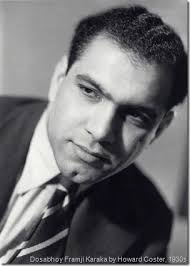
The picture of Leonor that accompanied her “interesting entry” was considered “almost as threatening as the entry itself”. On the morning of the interview, a tornado was expected to blow into the newspaper office, bearing a flaming torch in one hand and a sword in the other. Although Leonor fulminated against the police for searching her residence by night, looking for components of bombs and other subversive material used in the Vasco bomb case, “the tornado from Goa was only a gentle breeze”, wrote Karaka. Frustrated with their sole discovery, a book titled Invasion and Occupation of Goa (National Secretariat for Information, Lisbon, 1962), containing world press reports on the contentious Goa Question, her Indian passport was impounded when she was on a visit to New Delhi and, back in Goa, censorship was imposed on her paper, with a heavy bond and two sureties made necessary to ensure “due performance of the restrictions”.
The intrepid Goan journalist stated that “her fight was against all governments who tried to deprive the people of civil rights and who imposed censorship, whether it was a Portuguese censorship or the censorship dictated by the Indian Government.” She especially decried censorship under a democratic set-up. “I wanted to publish in my paper extracts from Inside, which is a Swatantra Party paper. These quotations were cut out by the censors,” she said.
Final Years
Some of her statements to the Bombay tabloid have a familiar ring even today: “The administration has gone rotten. In the (Goa) Assembly, the Opposition has accused the Government of nepotism, communalism, inefficiency and incompetence…. Laws have been passed without going into the constitutional right of the people,” she complained.
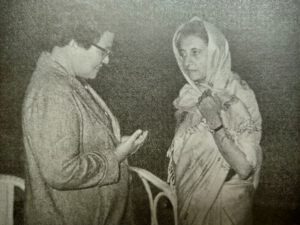
While she made a case for the preservation of the Goan identity, showing her red-pencilled extracts of Nehru’s speech at Siddharth Nagar, Bombay, on 4th June 1956, to redress her own grievance against the Government of Goa, she either met or wrote to Indira Gandhi every time. In her letter of 19th February 1966, she declared, “I believe in a Power above the powers of the world and in justice that comes, sometimes in time, at other times a bit late, in some manner or the other.” The restrictions were soon lifted, by a letter dated 13th May 1966, the significance of which day was not lost on Leonor: she was a great believer in the Message that the Mother of Jesus gave on this day, half a century earlier, in her apparition at Fatima, a place Leonor visited on several occasions.
Her meetings with Mrs Gandhi are recounted in Contribuição, which also carries interesting reflections on the period spanning 1961-78; her missives from Portugal, Angola and Mozambique (August-October 1969), which though “innocuous” were responsible for her passport problems yet again; historical snippets about her newspaper; the story of the legendary José Inácio de Loyola Sr.; and photocopies of historic telegrams of the tumultuous days of September 1890.

Karaka had found it “heartening to see a woman in her 50s, who had been so disturbed by the turmoil of politics, still crusading for the rights of the people and still having faith in a Power above the powers of the world.” Leonor was truly blessed with a deep and empowering faith – or else she would not have endured as a career journalist until December 1975. She said, “I have great faith in Our Lady. Although I have been harassed in my life by the powers on earth, I have never cared or worried.” And not surprisingly, when the Angel knocked at her door on 8th January 2005, he must have found Leonor de Loyola Furtado e Fernandes, at the ripe old age of 95, still steadfast in her principles and faithful to her people.
(Herald, 'Mirror', Sunday magazine, 24.05.2009)
Magic Aunt Zita

When our best-loved aunt Zita left for her heavenly abode a year ago, we felt a light going out of our lives. There was darkness everywhere. She had been struck by a crippling illness for a considerable period, but magically, her own light never flickered; on the contrary, by her exemplary fortitude, she radiated still more light. I got the picture when I spent a day by her side, at her home in Curtorim, to recall the good old times and to especially thank her for all that she meant to us. In her last months, kith and kin she had not seen in a long time also had the fortune of meeting up with her.
Tia Zita spelt magic, in the positive sense of the term. She was cheery – that’s magic; she loved unconditionally – and that’s magic, too. What else could one wish for? You ask, what is the secret of all this? Her very life – lived less for self and more for others. Her unspoken motto was ‘Fazer o bem, sem ver a quem’: Doing good to all and sundry. At times she must have felt misunderstood, but she took it all in her stride, convinced that loving kindness conquers all!

St Paul exhorted the New Christians to be, ‘like Christ, everything to everybody’. To some our aunt was the Sun, to others the Moon. She burnt strong and bright as the sun, and stood by her family like a rock; and like the moon, her soft side provided a cushion to the family’s generation-next in their difficult moments. She would make light of any problem and top it off with a delectable treat!
With that perfect balance she managed home and office. Her husband experienced her self-giving love for more than quarter of a century; colleagues at office and staff at home valued her understanding and jovial disposition. She generously gave of her time, especially to her mother, and of her money to those in need. Her easy smile would turn into peals of laughter, triggered by an upfront comment or some naïveté of yesteryear. With no children of her own, she was a mother to her nephews and nieces. It was in her nature to reach out to everyone, which won her the epithet ‘Mother of Mercy’!
She was a woman ahead of her times. She studied and worked in British India and then joined the state tourism and information bureau in the Goan capital. In the early 1970s – when hardly any lady in Goa dreamed of owning a two-wheeled motor vehicle – she would ride her Rajdoot scooter to her workplace in Margão. This spoke of her outgoing personality, her initiative, and of her daring, too, especially considering that she could neither start the bike nor park it securely: a man-servant at home and a peon at the office usually did the honours!
As the first manager of the government-owned tourist cottages in Farmagudi, she once played host to our bachelor statesman Vajpayee, then a foreign minister. He praised her penchant for landscaping, while our aunt quite naturally engaged in repartee reflecting the Goan joie de vivre. All of which must have got our poet-minister to pen a verse or two!
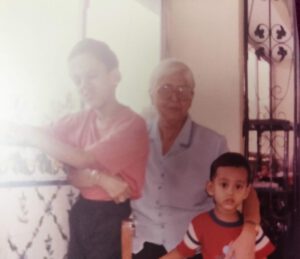
Aunt Zita herself was not an armchair tourist; impelled by the travel bug, that slim and fair-skinned lady, who was always in step with fashion, crisscrossed India and some countries in Europe, with a relative or a friend. And after having been a ‘tourist’ all her life, in the two decades of her retirement she was essentially a ‘pilgrim’ who daily went to church for Mass and was engaged in charitable activity.
Several years earlier, a critical tryst with illness, which she was healed of thanks to a non-surgical intervention by the saintly Dr Ernest Borges, had been a turning point in her life. But her final test came during the Holy Week last year: she lay in the hospital bed – her purgatory on earth – her sweet visage reflecting Christian resignation vis-à-vis that inescapable moment of reckoning.
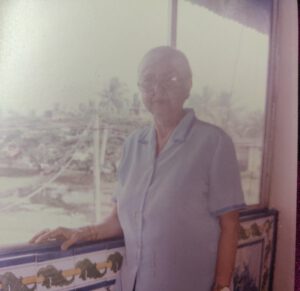
It is a moral certainty that Tia Zita is now in the Beatific Vision. And most certainly, too, none of what has been said here will be of importance to her; it rather will make us all the difference to realize that her life was an echo of this touching quote: ‘I shall pass through this world but once. Any good therefore that I can do or any kindness that I can show to any human being, let me do it now. Let me not defer it or neglect it, for I shall not pass this way again’ – which could well be a way for us – who are not of this world – to look forward to the treasure that awaits us in Heaven.
(Herald, 27 March 2009)
Banner pic: Isabel and I, flanked by T. Zita and T. Francisquinho, Neura, 13 May 1994
